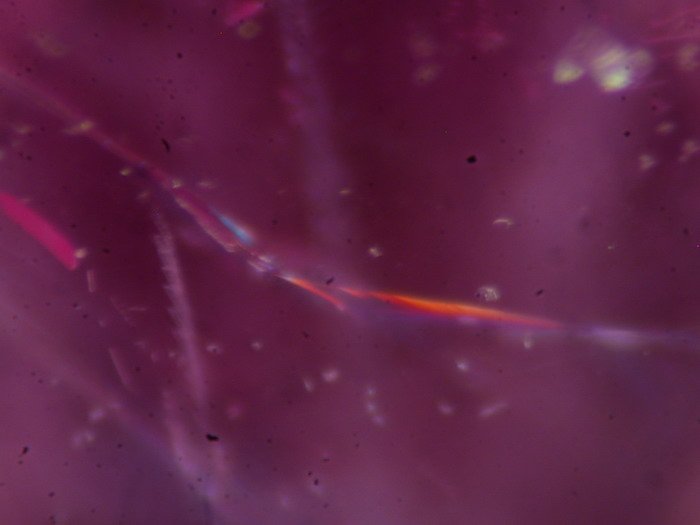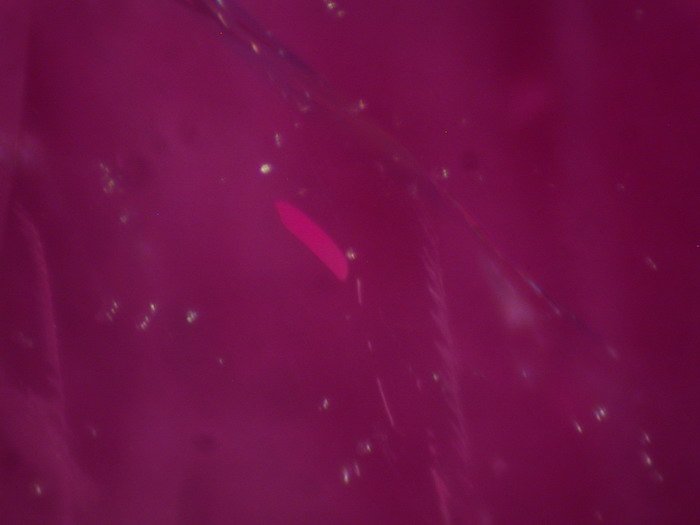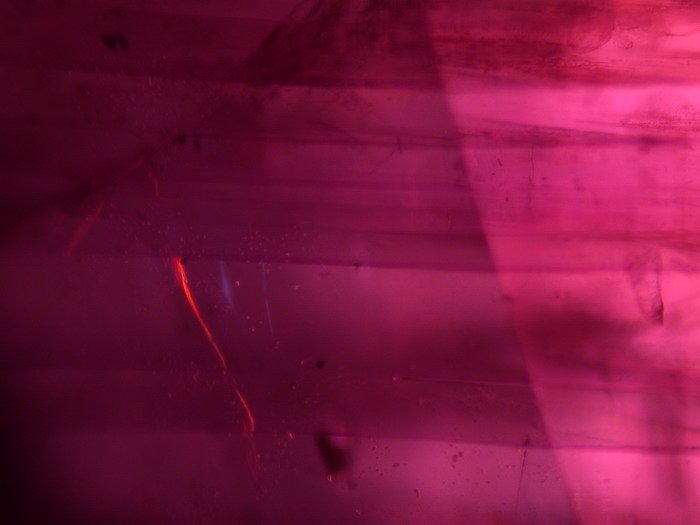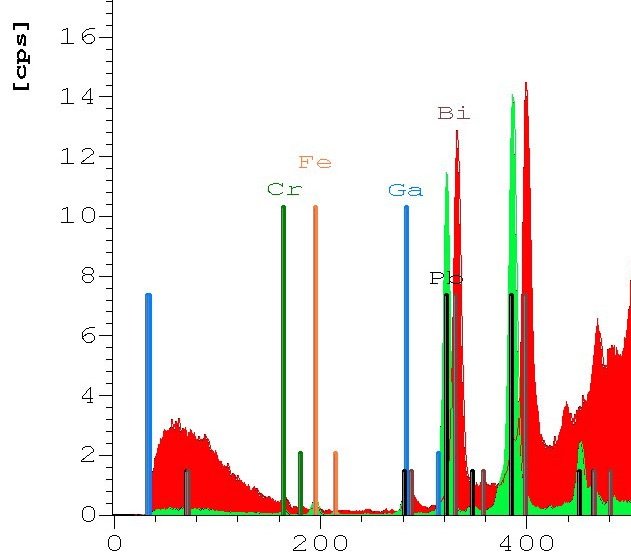GRS Alert: Clarity enhancement of rubies with a foreign solid filler including Bismuth
For the last couple of years, the appearance of lead-glass treated rubies has been widely recognized in the trade. The treatment is primarily used to enhance clarity in rubies or pink sapphires of lower commercial value. This treatment has been regularly seen at the GRS laboratory in rubies from Madagascar as well as in Star Rubies, such as from Burma (Myanmar) to mask disturbing single cracks. The lead-glass filling also contained some coloring agents which contributed to increase of color saturation. The identification of the lead-glass-treated corundum could be identified by optical methods, such as the presence of flashes of rainbow color as well as isolated flat gas bubbles (see fig. 1 and fig. 2). Confirmation of the Identification of the filler can be made by non-destructive chemical testing such as using ED-XRF analysis (see fig. 3). A strong lead-signal by ED-XRF testing (Pb, fig. 4 ) is conclusive of this particular treatment.
Recently, however, GRS discovered a new version of this treatment. It was detected in large pink sapphires of large size over 20cts and commercial significance. The material contained less iron than Madagascar rubies or pink sapphires as part of the trace elements. In the microscope, the same rainbow color flashes are observed and the same gas-bubbles are found (fig. 2) such as in the lead-glass-filled rubies. With special analysis we identified a part of the filler as bismuth (Bi). No concentrations of lead (Pb) were found although the optical appearance was similar to the lead-glass treated rubies. The clarity enhancement in this new type of treatment includes Bi and may be called “bismuth-glass” – treated. Warning: The presence of “rainbow flashes” in the microscope is not conclusive anymore for the use of lead in a solid filler. Special testing is mandatory to confirm this new treatment as well as to distinguish them from lead-glass-treated counterparts.
Stones of this category will be called by GRS as:
Treated-Natural Ruby/Pink Sapphire. Comment: Heat-treated and clarity enhanced with a foreign solid filler (including bismuth).




© 2023, GRS GemResearch Swisslab AG

